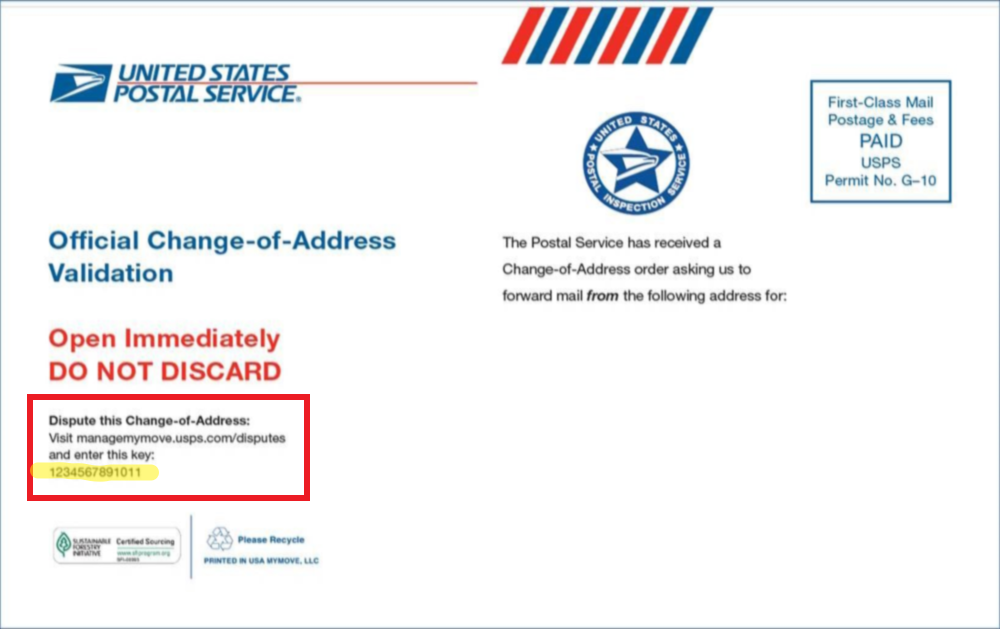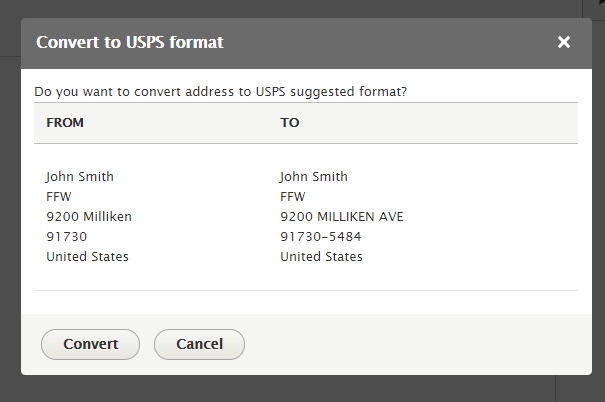


Changing address with usps changes address with ups update#
(Note that if a building is demolished to be replaced by another building, the address will likely be moved to no-stat status and not be removed from the total number of addresses).When you move to a new house or business office, you’ll want to update your mailing address with the United States Postal Service. In distressed areas, a reduction in total AMS addresses from quarter-to-quarter appears to be a strong indicator of where demolition is occurring. No-stats with a stable or reduced number of addresses probably reflect long-term vacant addresses. An increase in AMS addresses with a similar increase in no-stat addresses likely reflects new construction/additions. One way to distinguish these two areas is by comparing Total Count of Address Management System (AMS) Addresses between quarters. Vacation/Resort areas have very high rates of vacant addresses.Īreas with high growth have high rates of no-stat addresses as do areas of significant decline.

While HUD is still exploring the utility of these data, it has identified the following items that may be of use to other researchers and practitioners: So, for example, our December 2005 extract shows no addresses being on the vacant list for longer than three months because we had only been counting for just over a month. Because USPS did not start counting days in each category until after entering into this agreement with HUD, the starting point for counting days in each category is November 18, 2005. In addition to the total counts above, the USPS is reporting to HUD for each quarter, the number of days an address has been in each category ( see data dictionary). Rural Route addresses that are vacant for 90 days or longerĪddresses for businesses or homes under construction and not yet occupiedĪddresses in urban areas identified by a carrier as not likely to be active for some time Total No-Stat Addresses are addresses that can be classified as "No-Stat" for many reasons, including: Total Vacant Addresses are addresses that delivery staff on urban routes have identified as being vacant (not collecting their mail) for 90 days or longer. Total Number of Addresses reflect all addresses (residential and business) that are recorded by the USPS. To the USPS, the address is either occupied and requires mail service or is vacant and does not. While occupancy status is recorded, USPS does not capture any information about the nature of the vacancy or the address itself, other than whether it is a residential or business address. These data are collected by USPS to facilitate efficient mail delivery. Because of its administrative origin, there are a few important items to remember when working with these data. USPS provides aggregate vacancy and no-stat counts of residential and business addresses that are collected by postal workers and submitted to HUD on a quarterly basis. Use of the data is permitted only for activities related to the " stated purpose" outlined in the sublicense agreement. Under the current agreement with the USPS, HUD can make the data accessible only to governmental entities and non-profit organizations registered as users. The potential power of these data is that they represent the universe of all addresses in the United States and are updated every three months. HUD is making these data available for researchers and practitioners to explore their potential utility for tracking neighborhood change on a quarterly basis. In 2005, HUD entered into an agreement with the United States Postal Service (USPS) to receive quarterly aggregate data on addresses identified by the USPS as having been "Vacant" or "No-Stat" in the previous quarter. For more information please refer to the Frequently Asked Questions (FAQ), which HUD strongly urges all current and potential users to read before attempting to analyze or apply these data. The most recent change has been the introduction of a new program that the USPS calls Move to Competitive (MTC) service, which resulted in a dramatic increase in the number of addresses. Changes in the way the USPS manages its address data have made longitudinal analysis using the USPS Vacancy Data more challenging.


 0 kommentar(er)
0 kommentar(er)
